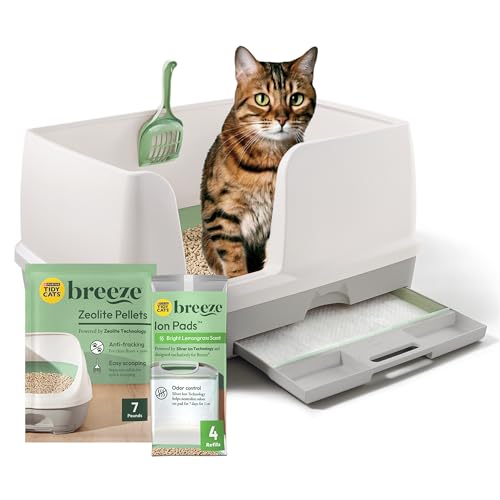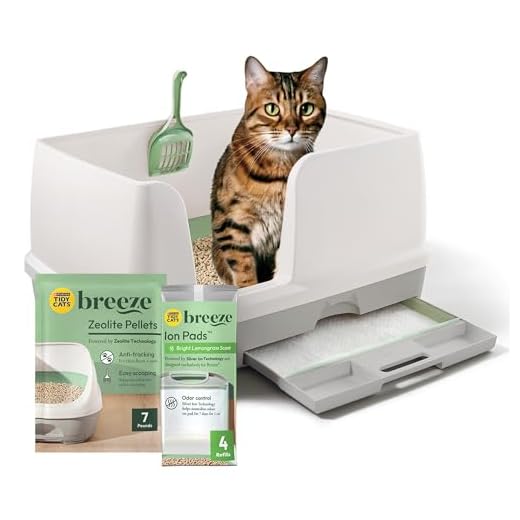

Consider a thorough inspection of the environment. A shift in surroundings, whether it’s a new member of the household or modifications in furniture placement, can cause discomfort or stress. Cats thrive on routine; disruptions may lead to avoidance of their usual restroom area.
Evaluate the cleanliness of the designated spot. Maintenance plays a significant role in encouraging proper habits. A dirty area is unappealing. Regular scooping and complete changes of substrate every few weeks are recommended to keep things inviting.
Monitor health closely. Sudden changes in behavior might indicate underlying medical issues. Conditions such as urinary tract infections or gastrointestinal problems can prompt avoidance. A visit to the veterinarian is advisable if unusual signs are present.
Experiment with different types of substrates. Preferences can vary, and what was once acceptable may no longer appeal. Offering a range of options can help identify the most suitable choice for individual tastes.
Lastly, observe the presence of any stressors. Loud noises, other pets, or changes in routine can create anxiety. Providing a safe, quiet space for relief can encourage a return to proper habits.
Understanding Health Issues That Affect Litter Box Use
Regular vet check-ups are vital. Health conditions can lead to changes in bathroom behavior. Look out for these common issues:
- Urinary Tract Infections (UTIs): Frequent trips to the box with little output may signal a UTI. Pain during urination can cause avoidance of the box.
- Kidney Disease: Increased thirst and urination are signs. If drinking habits change, a vet visit is necessary.
- Diabetes: Similar to kidney issues, diabetes can lead to excessive urination. Monitor appetite and weight changes.
- Digestive Problems: Diarrhea or constipation can cause discomfort. If defecation is painful, the box may be avoided.
- Arthritis: Painful joints can make it hard to access the box. Consider a more accessible setup for comfort.
Parasites can also play a role. Fleas, for instance, can lead to irritation and stress. To keep your furry friend comfortable, check out the best flea medicines for cats.
Monitor behavior closely. Changes can indicate underlying health issues requiring immediate attention. A swift response can ensure a happy and healthy life.
Evaluating the Litter Box Setup and Location
Check the dimensions of the receptacle. A spacious container allows for comfortable movement and digging. If it’s too cramped, discomfort may lead to avoidance. Aim for a box that’s at least one and a half times your size to ensure ample space.
Consider the substrate. Different materials can affect preference. Some prefer clumping types for their ease of cleaning, while others might favor crystals or natural options. Experiment with various kinds to find which one appeals most.
Placement Matters
Positioning is critical. Keep it in a quiet, low-traffic area to minimize disturbances. Avoid placing it near food and water bowls, as this can deter use. Ensure it’s easily accessible, especially for older or less mobile friends.
Maintenance Routine
Regular cleaning is a must. Scoop daily and wash the container weekly to prevent odors and buildup. A fresh-smelling environment encourages continued use. If odors persist despite cleaning, consider a pressure washer for deeper sanitation–check out the best pressure washer for garden slabs for effective tools.
Identifying Changes in Your Pet’s Behavior or Environment
Observe any shifts in daily habits. If playtime decreases or your furry friend seems more withdrawn, this could indicate discomfort or distress. Keep a close eye on interactions with humans and other pets; withdrawal might suggest a need for a calmer environment.
Changes in grooming habits often signal underlying issues. If your companion appears unkempt or less interested in self-cleaning, it may be time to explore potential health concerns.
Monitor food and water intake. A sudden increase or decrease in appetite can be a red flag. Note any changes in the frequency of visits to the designated area; this can provide vital clues about well-being.
Environmental factors play a significant role. New furniture, different odors, or unfamiliar sounds can affect comfort levels. If a recent move or renovation has occurred, consider how it might impact your buddy’s behavior.
| Behavior Change | Possible Cause |
|---|---|
| Increased hiding | Stress from changes or health issues |
| Less grooming | Pain or discomfort |
| Altered eating habits | Illness, dental problems, or stress |
| Reduced playfulness | Health concerns or environmental stressors |
Pay attention to any new objects in the home. Items like litter boxes or food dishes placed in unfamiliar areas can create anxiety. Ensure that everything is in familiar settings to maintain a sense of security.
Lastly, consider social dynamics. Changes in the household, like new pets or visitors, can alter behavior. Take note of how your furry friend interacts with newcomers and adjust introductions to create a welcoming atmosphere.
Exploring Different Types of Cat Litter and Their Impact
Choosing the right substrate can make a significant difference in comfort and preference. Clumping clay litters are popular for their ease of cleaning and odor control. However, some felines might dislike the texture, leading to avoidance. Consider switching to a non-clumping option or one made from natural materials like corn or wheat if your friend shows signs of discontent.
Silica gel crystals offer excellent moisture control but can be uncomfortable for some. They produce less dust, which is a plus for sensitive noses, yet the feel underfoot might not be appealing. Experimenting with various types can help identify what suits your unique companion.
Natural and Biodegradable Options
Natural litters made from recycled paper, wood, or coconut husk are gaining popularity. They are eco-friendly and often softer on paws, making them a great alternative, especially for those sensitive to synthetic materials. Cats may find these more appealing, which can encourage consistent habits.
Fragrance and Additives
Litters with added scents can mask odors but may irritate some noses. If your furry friend is avoiding the area, consider switching to an unscented variety. New additives, like those for enhanced odor control or health monitoring, can also influence preferences. Always observe how your pet reacts to changes to determine the best fit.
Recognizing Signs of Stress or Anxiety in Felines
Observe changes in behavior such as increased hiding, aggression, or excessive grooming. These can indicate emotional distress. If I suddenly refuse to interact or withdraw from my favorite spots, it’s a clear signal that something’s off.
Physical Indicators
Watch for signs like dilated pupils, rapid breathing, or a tucked tail. These physical manifestations often accompany anxiety. If I display these traits during routine activities, it’s time to assess my surroundings.
Environmental Triggers
Changes in daily routine, new household members, or loud noises can impact emotional well-being. If a new pet arrives or renovations begin, I might react negatively. Keeping an eye on my response to these shifts helps in understanding my comfort level.
Implementing Training Techniques to Encourage Litter Box Use
To motivate the return to the designated area for bathroom needs, start by associating the space with positive experiences. Use treats or favorite toys nearby to create a pleasant atmosphere. Gradually guide your companion to the area after meals or naps, reinforcing the behavior with praise.
Consistency is Key
Establish a routine for visits. Regular intervals help create a habit. Monitor the frequency of visits and adjust based on your furry friend’s needs, ensuring they feel secure and comfortable during the process.
Utilizing Positive Reinforcement
When successful, reward immediately with a treat or affection. This reinforces the desired action and makes the experience more appealing. Avoid punishment, as it can create anxiety and further deter visits to the area.









